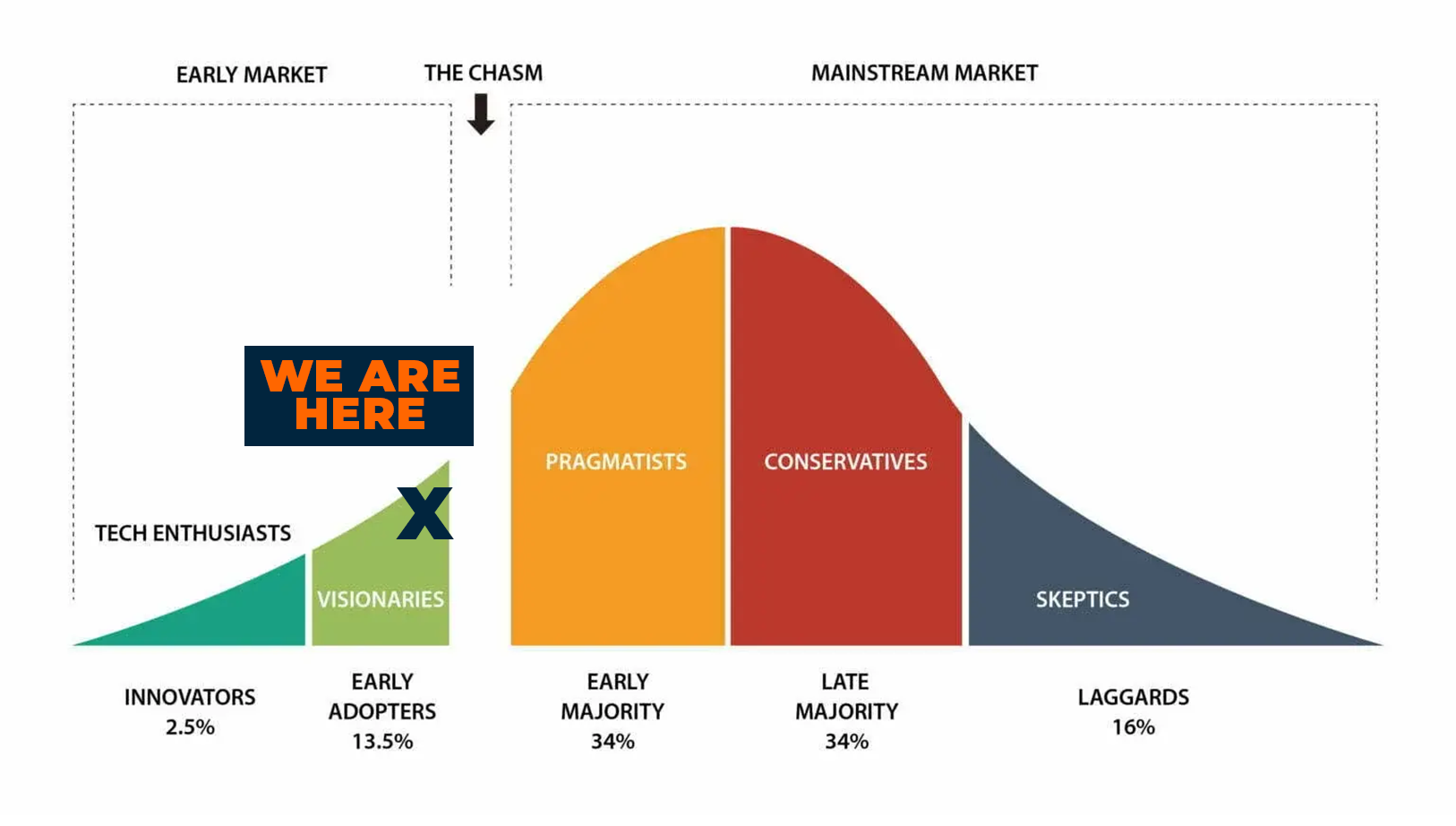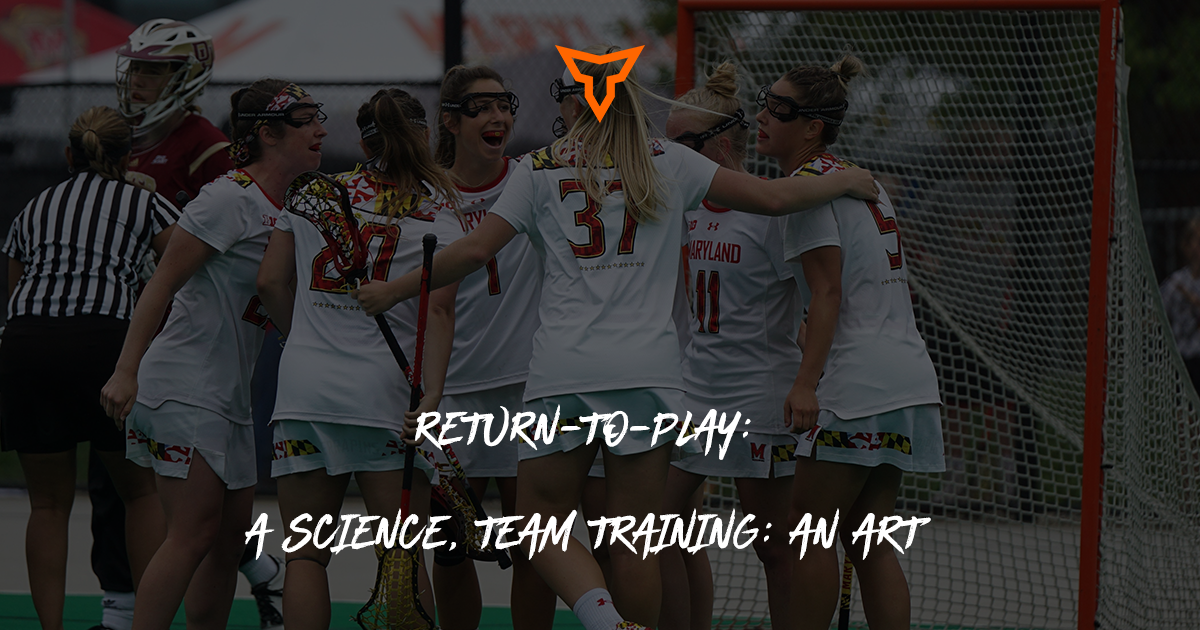Force Plate Technology: Benefits & Considerations
Over the past few years, it’s apparent that hardware technology continues to advance in ability while decreasing in cost to consumers as parts become easier to manufacture. One such piece is Force Plate Tech. While the monetary cost of force plates becomes more affordable, the “cost to understand” has stayed the same or will even increase.
The speed at which you can physically obtain force plate technology often does not match the time cost to understand the how, what, and when of using them. But the availability of force plates is growing: Coaches and practitioners increasingly find themselves at facilities that already have force plates or find themselves gaining access to plates through grants or donations.
Where Are We Now
In the evolution of technology, the increased affordability and utilization of a novel technology is referred to as the “Adoption Curve.”[1] Using a recent example, Apple’s newly released virtual reality headsets resemble the midpoint of “early adopters” considering the technology has been around since 2012. Apple is essentially attempting to cross the “Chasm” we see above by marketing a novel technology to a larger audience. Similarly, force plates - first invented in the 1960’s - are now more relevant than ever. [2] Predominantly, force plates have been used in research settings and most recently have become much more prevalent in the everyday coaching setting.
All of this is to say: I believe we are at the “Chasm” where we have a large amount of relevant experience over the past 5-10 years of people using these in the applied setting than before. The next phase is going to require a condensation of that knowledge into a road map for others to follow.
Bringing into the fold a progressive approach to starting with a broad, simple approach to capture relevant information that applies to most, if not all, scenarios and allowing people to establish a base standard of use to then re-evaluate their context and apply more pointed metrics and evaluative processes to better serve and understand the clients and athletes they work with.
What Comes Next
In part, some of the reluctance for adoption comes in the form of presenting relevant information to those who produce the data point itself - the athlete. In some cases come other stakeholders - a parent, coach, or administrator.
So how does this technology that seems foreign to some practitioners get easily displayed and inform those who will be producing the information from the start? Well, there is a need for a more simplistic display of said information. If athletes, coaches, and other stakeholders can afford 3-5 minutes looking at a force plate-generated report while it takes a practitioner hours to understand that same report, I think it can be safe to assume the new party to the information will not get the picture in 3-5 minutes.
There are some test types and metrics that will translate more quickly than others, but it’s vital to establish common ground into what those mean for an individual or team before initial exposure to data.
I recently put together a free lecture series covering the very basics of establishing the use of recently acquired force plates for this very purpose. In the 4th lecture, I mention that “a soccer coach will understand the finer details of what a 4-4-2 formation may entail but not what the concentric impulse asymmetry score may mean or why that may have relevance to a wing-back that exclusively plays one side of the field and that it may look different for the opposite wing-back” or why the “certain aspects of the player profile for a holding center mid will look different than an attacking central midfielder” and if you want to recruit someone who has more range in their field positioning may need to fall within a certain range of that profile.
Because this is where you can go with force plates. It does not mean I believe you should start that aggressively, but I will recommend starting small and expanding at the rate of understanding with all parties involved. It is hard to know what the minimal effective dose is to help a migraine when you prescribe someone Advil, Tylenol, and Morphine all at once (for legal reasons that is hyperbole). Start small.
TeamBuildr & Force Plates
Looking into our future with this technology, TeamBuildr will be integrating with Force Plate technology; specifically, Hawkin Dynamics & Vald Performance very soon. We will be starting small and offering a simple visualization of the data that is collected.
Our vision is to build a reporting line that helps you present the information in a way that is consumable by the 3rd parties involved and better allows you to utilize the technology at hand.
We will continue to grow the offerings within our system in time to match those that the force plates allow, but we want to establish the best standard of practice that we can to ensure that all levels of experience and understanding using this technology can obtain value in the way the information is presented. We look forward to what you will create.
References
[1] https://omniplexlearning.com/blog/technology-adoption-curve-stages/
[2] https://www.hawkindynamics.com/blog/what-is-a-force-plate
Subscribe to our blog
Subscribe to receive the latest blog posts to your inbox every week.
Related posts

7 Things to Consider Before Building a Sport Science Program

Return-to-Play: A Science, Team Training: An Art


